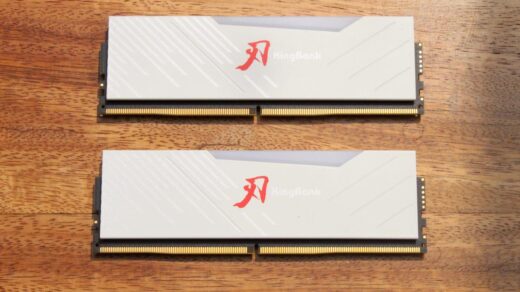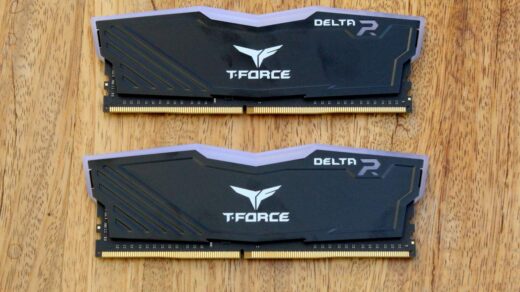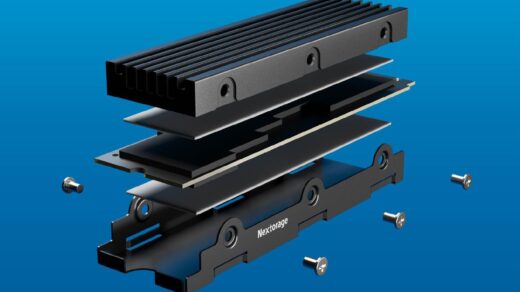Extreme Overclocking on the GeForce RTX 4060 – Modifications, Experiences, and Results!
Recently, we published the review of the Galax RTX 4060 EX, which actually performed well in 1080p. However, due to some of its limitations, such as the 8 GB of VRAM and the PCIe limited to eight lanes, along with its positioning and price, it wasn’t received very warmly upon its release.
With this context in mind, how about turning something that is already not very warm into a true block of ice? That’s exactly the goal of this article! Extreme overclocking on the RTX 4060!!! 😀
In the review article, some tests were conducted with no modifications to the card, where it was possible to achieve just over 3000 MHz in GPUPI, 2980 MHz in Fire Strike, and 2960 MHz for Time Spy. These frequencies seem to be average for these GPUs based on the Ada Lovelace architecture, with the best samples reaching around 3100 MHz for 3D benchmarks.





Except for the RTX 4090, which ranks high globally and has more available information, there is a lack of literature on the other GPUs in this generation. For instance, we have limited knowledge regarding their behavior with additional voltage or under extreme cooling. However, given that they share the same architecture and manufacturing process as the AD102, it is reasonable to expect similar performance characteristics.
That being said, let’s proceed to test whether the AD107-400 exhibits frequency gains with additional voltage. To achieve this objective, it was utilized the ElmorLabs EVC2, which supports the uP9512 PWM controller used in this graphics card.


These two devices communicate through the I²C protocol, which means it is necessary to locate the SDA/SCL pins of the uP9512 and the corresponding pads directly connected to these pins in order to establish communication with the EVC2. Below, you can see how to make this connection and the result.
It’s important to note that hardware modifications void the warranty, and we are not responsible for any potential damages or losses. If you are not experienced in soldering or lack knowledge of electronics, we strongly advise against attempting these procedures!


With this setup, it is possible to apply a voltage offset of up to 150mV and configure parameters such as OCP (Over Current Protection), LLC (Load Line Calibration), and the switching frequency (FSW). Although we haven’t verified the default factory FSW for this particular card, the available information suggests it is set around 500 KHz, which is already higher than expected considering the used MOSFETs. Therefore, it is crucial to exercise caution when adjusting this parameter, as increasing the FSW can lead to higher VRM (Voltage Regulator Module) dissipation.
That being said, the first test was conducted using the original cooler. This was done to ensure that everything was functioning properly with the card after the modifications, which fortunately was the case.
Unfortunately, there were no frequency gains observed with additional voltage when using air cooling. This behavior has been consistent with NVIDIA cards since the Pascal series.
The next step involved testing with water cooling. A custom loop was utilized, consisting of a 360mm radiator equipped with three high airflow fans (100+ CFM), a Freezemod RGB block, and Thermal Grizzly Conductonaut.
The infamous liquid metal can make a difference in this case since one of the challenges of using increasingly dense manufacturing processes is efficiently dissipating heat from the die. The properties of liquid metal can aid in this regard. However, it is important to exercise caution as it can react or corrode certain materials, such as aluminum, and it has a tendency to flow, which could lead to a short circuit and render the GPU unusable. Therefore, it must be used with caution.
In addition, heat sinks were added to the VRM (Voltage Regulator Module), and two 680uF 6.3V SMD tantalum capacitors were placed on the GPU phases. This modification should result in reduced ripple under load and theoretically help achieve a few extra megahertz. However, if the standard voltage regulation is already adequate, this modification may not yield noticeable differences in the results.


With this configuration, the GPU did not exceed 43 °C under load, which is a significant improvement compared to the already excellent original cooling system of the card. This lower temperature allowed achieving 3105 MHz in GPUPI 3.2 1B with a voltage increment of +110mV and 3060 MHz in 3DMark Fire Strike with +0mV, meaning there were no performance gains when increasing the GPU voltage in 3D benchmarks at ambient temperature.


If the additional voltage didn’t yield inspiring results at ambient temperature, then it’s time to delve into extreme overclocking! 😀
As always, it is necessary to prepare the hardware before subjecting it to sub-zero temperatures, with the main concern being condensation. However, in the case of the RTX 4060, the challenge begins with its compact PCB, which posed a hindrance when setting up the GPU “pot.” Therefore, it was necessary to be a bit creative and mount the GPU horizontally using a CPU “pot,” similar to what was done with that poor Quadro!
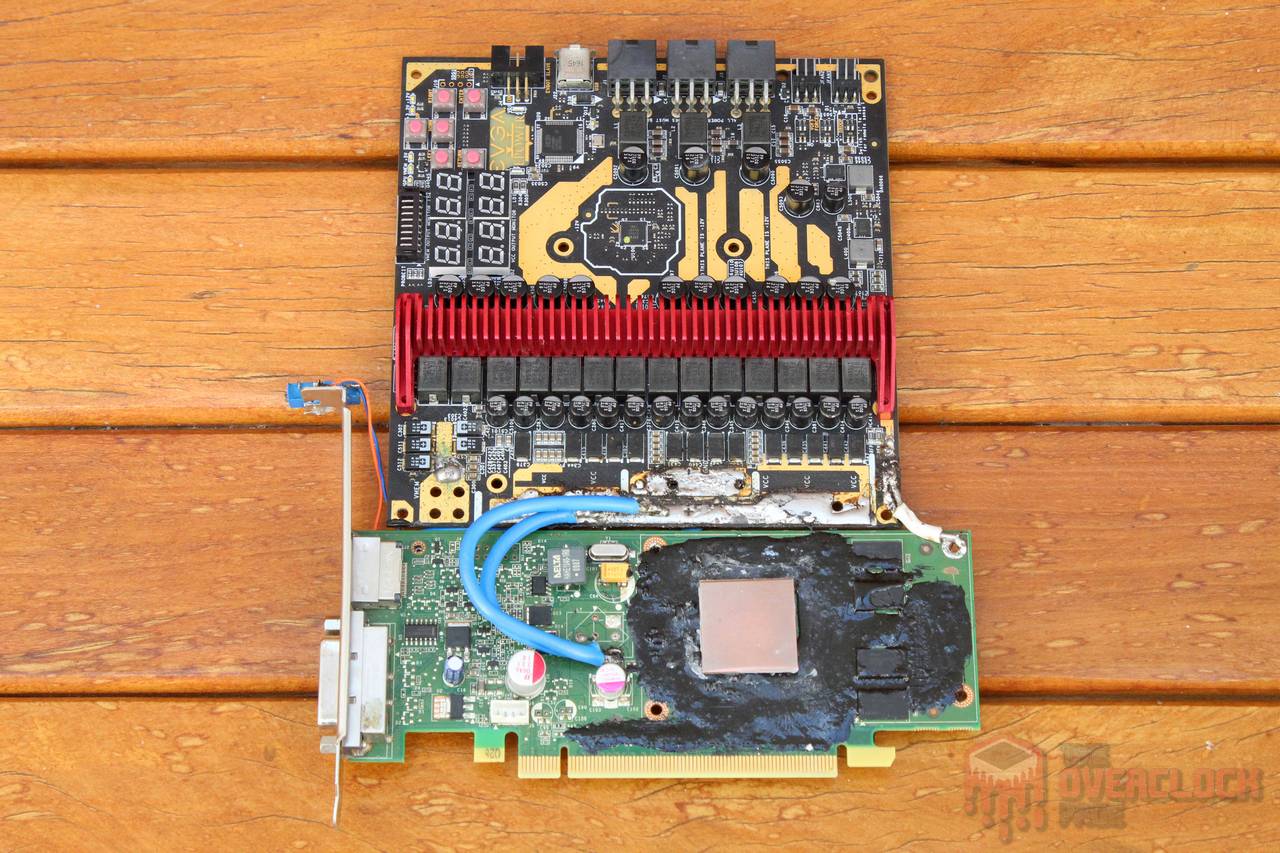
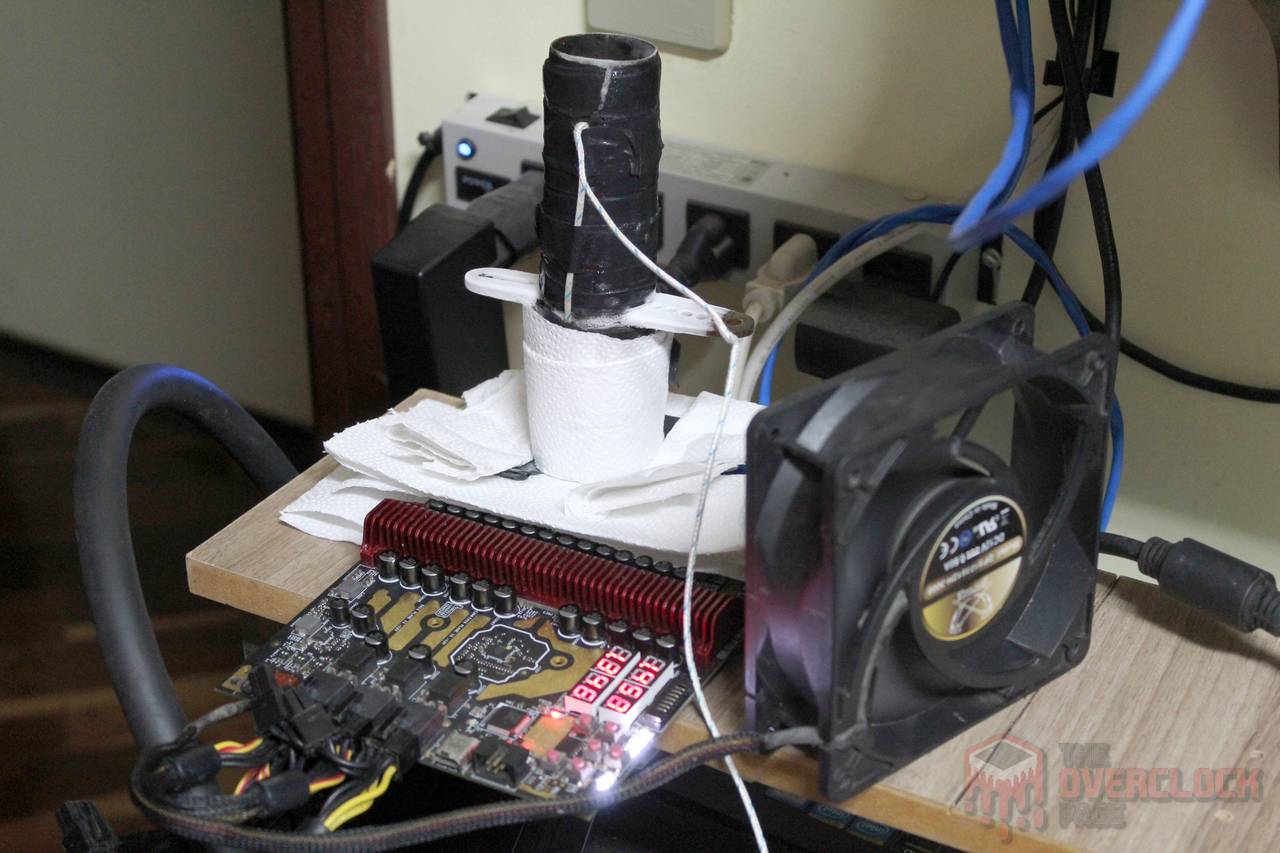
Despite appearing relatively simple, this solution presents some challenges. For instance, securing the “pot” becomes more complicated, often relying solely on gravity, which can be problematic for GPUs with exposed dies. Additionally, a PCI-E riser is required, which can introduce issues if it is of questionable quality. Lastly, it will be necessary to devise a table or platform for the GPU to accommodate this configuration.
Since this card needs to be returned to its brave owner, a requirement for the insulation was that it should be easy to remove without leaving any traces. Therefore, clean rubber and paper towels were used for this purpose.
To address the issue of securing the “pot,” an IHS (Integrated Heat Spreader) from a Core 2 Duo E7400 was adapted to fit the GPU. This not only protected the die but also allowed gravity to hold the Kingpin F1 Dark in place on the card. While direct contact between the “pot” and the die would have provided better heat transfer, it would have required additional mounting bars and the fabrication of a backplate, making this adaptation somewhat more complicated.



In this session, 1 kg of dry ice was used, which allowed temperatures to reach as low as -57°C at the base of the “pot.” The RTX 4060 showed no issues whatsoever with this temperature.
Finally, there were frequency gains observed when increasing the GPU voltage. In Fire Strike, it was possible to achieve a maximum of 3180 MHz with a +60mV offset, while in Time Spy, the frequency had to be lowered to 3150 MHz with a +40mV offset. This was expected since Time Spy is a more demanding benchmark, leading to increased heat dissipation challenges due to the difficulty of extracting heat from the die.
In the case of GPUPI, being a 2D test that primarily utilizes CUDA Cores, it was possible to push the frequency further, reaching 3255 MHz with a maximum +150mV offset, 150% FSW, and LLC.
It is also important to note that the “Pwr PerfCap” only was a limiting factor in GT2 of Time Spy, with no differences observed between the card being at stock settings or with the overvoltage applied. This implies that, in practice, the power telemetry is not functioning properly in the RTX 4060, and theoretically, to completely eliminate this limitation, one would simply need to use a BIOS with a higher power limit than the +13% offered by Galax.
These results were sufficient to achieve first place in the HWBOT rankings, which is not surprising considering there are currently no other competitors. It remains to be seen how these results will hold up as more people acquire the RTX 4060 and enter the rankings.






As expected in an article about extreme overclocking, it’s time for the frozen hardware photo gallery! 😀




In conclusion, performing modifications and extreme overclocking tests on the RTX 4060 was an interesting experience. It wasn’t about breaking records, as its potential in that regard is negligible, but rather about pushing the limits of the newly released hardware and finding solutions to make things work, such as adapting the Core 2 Duo IHS.
Regarding the results obtained, the AD107 GPU virtually does not scale with additional voltage at ambient temperature, showing only minimal gains in GPUPI, even when using a custom water cooling setup with liquid metal thermal compound.
However, when it comes to extreme cooling with dry ice, the voltage adjustment proved to be useful, with the card scaling with up to +60mV in 3D and +150mV in GPUPI. Frequencies achieved ranged from 3130 MHz to 3255 MHz, with the potential to go even higher at lower temperatures, specifically when using liquid nitrogen.
To summarize the article, here are tables with the maximum frequencies achieved both in Fire Strike and GPUPI, along with the cooling method and voltage used in each case.







